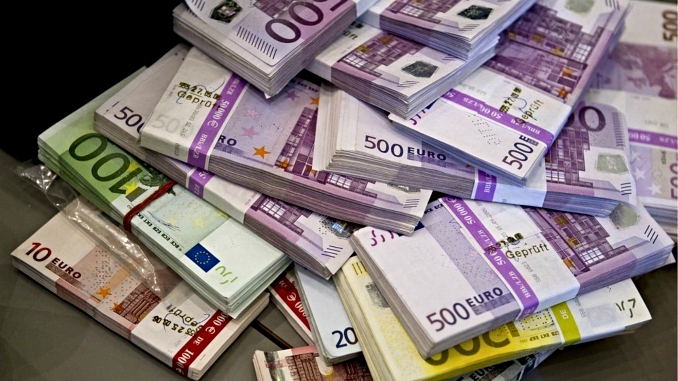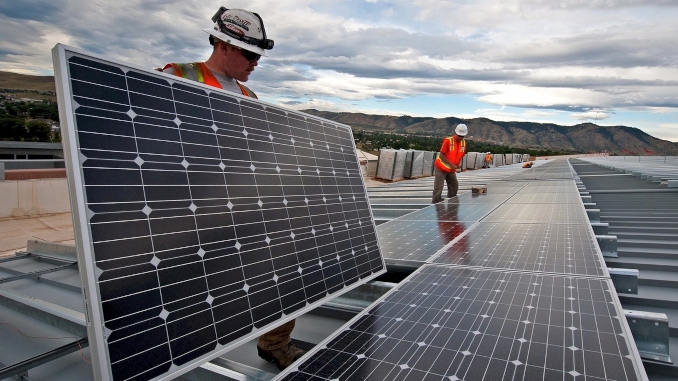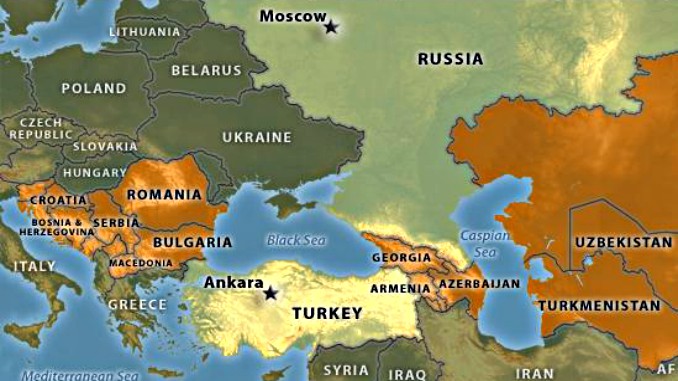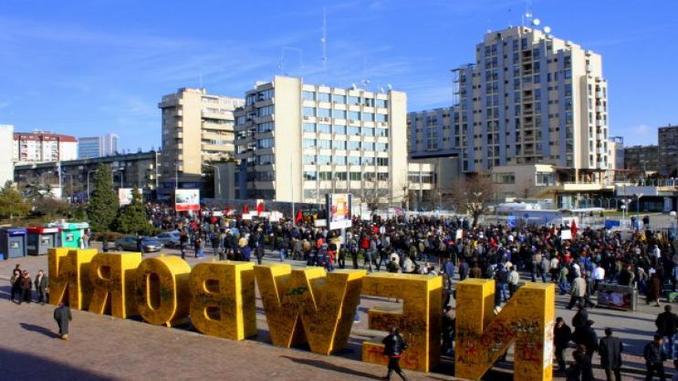Moody’s raises Serbia to Ba3 on fiscal consolidation, shrinking debt

Moody’s Investors Service said it has upgraded Serbia’s long-term issuer and senior unsecured ratings to Ba3 from B1 and moved their outlook to “stable” from “positive”.
The key drivers of the upgrade in Serbia’s senior unsecured and long-term issuer ratings are the country’s notable fiscal consolidation which has halted the increase in debt burden and reduces risks to the fiscal position, Moody’s said in a statement late on Friday.
Moreover, the recent structural reforms have increased the resilience of the country’s economy, supporting potential growth, the credit ratings agency said.
The “stable” outlook reflects the balanced risks to Serbia’s credit profile at the Ba3 rating level. While the pace of reforms may slow following the significant gains achieved in 2016, Moody’s expects that Serbia’s continued progress with the EU accession process and likely further engagement with the International Monetary Fund (IMF) will help to limit the risk of a reversal of the reform progress achieved to date, Moody’s added.
Moody’s has also raised Serbia’s long-term foreign-currency bond ceiling to Ba1 from Ba2, and the long-term foreign-currency bank deposit ceiling to B1 from B2. The short-term foreign-currency deposit and bond ceilings remain unchanged at NP. Finally, the long-term local-currency bond and deposit ceilings have been raised to Baa2 from Baa3.
The ratings agency also said:
“RATINGS RATIONALE
RATIONALE FOR UPGRADE
— FIRST DRIVER: FISCAL CONSOLIDATION HAS HALTED RISE IN DEBT BURDEN
The first driver of the upgrade is Serbia’s notable fiscal consolidation which has halted the increase in its debt burden and reduces fiscal risks.
The Serbian authorities have executed a highly successful fiscal consolidation which has led to a marked improvement in its 2016 fiscal performance, with the first primary budget surplus since 2005 supporting a fall in the general government debt to GDP ratio to 74% of GDP at the end of 2016 after years of increases. Furthermore, fiscal reforms undertaken in conjunction with the IMF’s three-year Stand-by Arrangement (SBA) have improved the structure of the budget helping to limit fiscal risks in the future.
Serbia’s strong budget execution has been supported by improvements in revenue generation, with general government revenue as a share of GDP rising by 2 percentage points to around 44%, the highest level since 2007 and above the median of Ba-rated peers (27.9%). Furthermore, the sharp reduction in permanent public sector employees by around 22,000 relative to end 2014, while slower than the targets set out in the government’s rightsizing plan, has helped reduce expenditure on public wages to below 10% of GDP, in line with the EU average.
As a result, Serbia has met the conditionality set out in the IMF SBA by a significant margin, with the general government deficit reaching an estimated 1.4% of GDP in 2016, far exceeding the 4% target in the original budget for 2016. Moody’s expects the deficit to decline moderately to 1.2% in 2017, benefitting from the recent improvements in revenue generation and a continued reduction in the public wage bill as a percent of GDP, despite budgeted wage increases in selected sectors. The debt burden will continue to gradually decline reaching just below 70% in 2018, although it will still remain above the median of Ba-rated peers (41.1% in 2015).
Improvements to the fiscal framework in Serbia will also support a conservative budgetary stance in the coming years. Moody’s expects that continued progress on the restructuring of state-owned enterprises (SOEs), such as those which have improved the financial viability of the Serbian railway company, will help to reduce the fiscal costs associated with subsidies, unpaid taxes and guarantees for the sector.
Total state aid paid from the budget, while still sizeable, has fallen in each of the last two years, reaching 3.7% of GDP in 2016 (from 5.2% of GDP in 2014) after direct subsidies declined by around 16% relative to 2015, and Moody’s expects these costs to continue to decline. Furthermore, future demands on the budget from SOEs will be reduced by the commitment of the authorities, as part of the IMF agreement, to strictly limit the issuance of state guarantees since 2015 and steps to prepay or refinance government guaranteed debt in 2017 on more favourable terms, given that activated guarantees accounted for a sizeable share of total state aid over the past three years.
— SECOND DRIVER: STRUCTURAL REFORMS INCREASE ECONOMIC RESILIENCE TO SHOCKS
The second driver is Moody’s view that recent structural reforms have increased the resilience of Serbia’s economy to shocks.
The Serbian economy recovered strongly in 2016, growing by an estimated 2.8% of GDP, the highest rate of growth over the past 8 years. Notably, the economy is now less dependent on final consumption with a reorientation towards exports driven by strong foreign investment into the tradeable sector. Moody’s expects economic growth will rise to 3.0% this year and reach 3.3% in 2018, noting that the diversity of growth drivers together with improvements to price stability will support potential growth in Serbia of between 3.5%-4%.
Moody’s expects the wide-ranging labour market reform undertaken in 2014 will help sustain private consumption, reflecting the improvement in labour participation to 65.6% in 2016 from 63.3% in 2014 and recent strong employment growth driven by the private sector. Furthermore, consumer spending will be supported by the sharp drop in the Labour Force Survey unemployment rate to 13.0% in Q4 2016, one of the lowest rates in the Western Balkans, and the recent pick-up in consumer lending.
Furthermore, investment activity will benefit from improvements in Serbia’s business environment (Serbia’s ranking on the World Bank Doing Business Report reached 47th in 2017) and an easing of financing conditions. Notably, implementation of the Non-Performing Loan (NPL) action plan and the completion of the Special Diagnostic Studies has helped contribute to stronger financial sector soundness and confidence. Moody’s expects strategically important infrastructure projects, such as Corridor 11, will also underpin investment activity.
Moreover, the recent broad-based recovery in exports, with almost all export sectors contributing to strong real growth in 2016, support the resilience of Serbia’s relatively open economy. While Serbia remains reliant on the EU market for its exports, particularly Italy (Baa2 negative) and Germany (Aaa stable), it has also grown its exports to neighbouring countries such as Bosnia and Herzegovina (B3 stable), Montenegro (B1 negative) and Macedonia.
In addition, Moody’s expects Serbia’s achievements in maintaining price stability will be preserved. The decision by the National Bank of Serbia to reduce the inflation target by 1pp to 3% (with a 1.5pp tolerance band) reflects the improved macro fundamentals, reduced inflation expectations and stronger credibility of the central bank. Moody’s expect an anchoring of inflation expectations at lower levels will help reduce longer-term interest rates and support potential growth.
Finally, improvements in external vulnerability help increase the resilience of the Serbian economy to external shocks. Moody’s expects the current account deficit, which narrowed further in 2016 to an estimated 4.0% of GDP compared to around 6% of GDP in 2013/14, will continue to be broadly covered by foreign direct investment (FDI) which has become more diversified in recent years.
As a result, Moody’s estimate of Serbia’s external vulnerability index is expected to remain low at around 40% of foreign exchange reserves. Furthermore, lower inflation will continue to support the authorities’ dinarisation strategy, which has seen the share of private sector deposits in local currency increasing to around 30% in 2016, improving resilience to exchange rate shocks.
RATIONALE FOR THE STABLE OUTLOOK
The stable outlook reflects the balanced risks to Serbia’s credit profile at the Ba3 rating level. While the pace of reforms may slow following the significant gains achieved in 2016, Moody’s expects that Serbia’s continued progress with the EU accession process and likely further engagement with the IMF will help to limit the risk of a reversal of the reform progress achieved to date.
Increased resistance to further reforms from vested interests, particularly those aimed at reducing fiscal risks from SOEs, could impact on the gradual reduction in Serbia’s debt burden. Furthermore, Serbia’s record of frequent elections, including snap parliamentary elections in 2014 and 2016, increases implementation risks, although Moody’s considers it unlikely that the forthcoming presidential elections will significantly delay the reform agenda. Serbia’s sizeable share of general government debt denominated in foreign currency poses a credit risk, particularly in the event of a sharp deterioration in the Serbian dinar, as does the high degree of euroisation in the banking sector. However, Moody’s notes that the authorities have been able to increase the role of local currency in the economy through its dinarisation strategy.
In contrast, Serbia could benefit from continued institutional improvements as part of the EU accession process. Progress on EU accession, which has continued through successive governments, has allowed Serbia to formally open 8 chapters out of a total of 35 since the formal start of accession negotiations in January 2014. The experience of other Accession Countries suggests that continued adoption of EU reforms will yield a number of enhancements to the quality of Serbia’s institutions, which has been recognized in improvements to Serbia’s Worldwide Governance Indicators on government effectiveness, rule of law and control of corruption relative to 2013. Furthermore, the economic recovery and fiscal consolidation could continue to surprise to the upside, as stronger confidence reinforces the fiscal and economic improvements made in 2016, and increased interest from foreign investors helps to accelerate the privatisation process.
WHAT COULD CHANGE THE RATING UP/DOWN
Upward pressure on Serbia’s rating could arise if progress on structural reforms led to a notable improvement in the country’s economic and fiscal metrics, resulting in a faster than expected reduction in the public debt burden closer to the median of similarly rated peers. Furthermore, structural reforms, including those to stimulate private investment through improvements in the business environment which in turn help to further boost potential growth in the economy, would be credit positive.
Conversely, downward pressure on Serbia’s issuer rating could arise if a reduced commitment by policymakers to the reform agenda, particularly in relation to addressing budget risks from the SOE sector, leads to a markedly weaker growth outlook and a deterioration in fiscal metrics. Moreover, the emergence of structural imbalances in the form of a large and increasingly difficult-to-finance current account deficit could also trigger a rating downgrade.”
Source: The Institute of Financial Services Practitioners






